Competitors of the legendary MiG-21. Part Four. CM-12. Best the enemy of the good
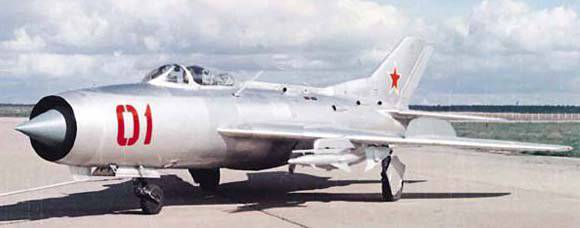
During the development of the MiG-21, the quite successful MiG-19 fighter was launched into production. He became the first serial supersonic fighter in the world. The MiG-19 was the first to solve many problems associated with supersonic flights. The only structural drawback of the aircraft was the subsonic air intake. As you know, the air intake device significantly affects the flight characteristics of the aircraft. The smaller the loss of the total pressure of the air entering the engine, the higher its thrust, and hence the higher the characteristics of the aircraft. At a flight speed corresponding to the Mach number of 1,5, loss of engine thrust with a subsonic air intake reaches 15%. Used on the MiG-15, MiG-17 and MiG-19 air intakes with a rounded shell, creating a suction force at subsonic speeds, at supersonic speeds significantly increased drag. But, it should be noted that at the time of the creation of the MiG-19, world science was only groping for the basic laws of supersonic aerodynamics, and therefore the first created, the MiG-19, was slightly ahead of the birth of a complete theory of supersonic input devices. Given the rapid development aviation at that time, the requirement to carry out work to improve the flight technical data of the MiG-19S aircraft given by OKB-155 on December 12, 1956 by order of the MAP No. 60 was quite logical. And in the spring of 7, the SM-1957 fighter entered flight tests - The next modification of the MiG-12C. The first car, SM-19/12, was converted at factory No. 1 from a high-altitude MiG-155SV (No. 19). On it, first of all, the air intake was replaced with a new one, with a sharp shell and a central body (cone). It was also planned to supply more powerful experimental engines RD-61210404BF-9 with the prospect of further installation of RD-2BF-9 with water injection. In the central body of the air intake device, the SRD-2M radio range finder, coupled with the ASP-1N optical sight, was placed. But due to delays in fine-tuning the boosted engines, I had to be content with the serial RD-4BF.
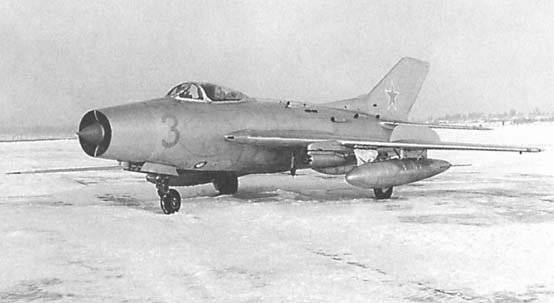
In this form, the CM-12 in April began factory flight tests. Apparently, the first flight and the main volume of these tests were performed by the pilot K.K. Kokkinaki. After the 15 flight tests, the CM-12 / 1 was continued with the RD-9BF-2 engines, but in the fall the car was put back for revision. This time it was equipped, as it seemed, with more promising engines P3-26. The RZ-26 engine with increased afterburner (3800 kg) at high altitudes, developed in OKB-26, was a modification of the RD-9B engine. Constructive improvements were made to increase the reliability of switching on afterburner at high altitudes and increasing the stability of work in variable modes.
The first copy, designated SM - 12 / 1, which previously carried out the test program with engines RD-9BF and RD-9BF-2, was equipped with new engines and sent to factory flight tests 21 of October 1957. The second MiG was almost finished with this machine -19C for RD-9BF-2 engines with water injection system. In general, this machine, which received the designation CM-12 / 2, was designed to tune this engine, but by the summer of 1958, it had not arrived at the experimental design bureau, and instead installed the Р3-26 engines.
The next model of the SM - 12 / 3 was already the benchmark for mass production and therefore it made the full scope of all design changes. The aerodynamics of the aircraft was improved by the use of a supersonic diffuser with an automatically controlled two-position cone at the entrance to the air intake channel, and therefore the nose of the fuselage was lengthened by 670 mm. They also installed boosters with semi-coupled spools BU-14MSK and BU-13МК instead of BU-14MS and BU-13М, and to improve reliability, we revised the hydraulic system of the booster control - we eliminated non-duplicated sections of hydraulic systems to the boosters, and all of the rubber hoses replaced with the new ones, and you’re using the same ones, you don’t use the same tools to add boosters, and all the rubber hoses replaced with the new ones, and you don’t use the same tools to add boosters, and all the rubber hoses will be replaced with the new ones, and you can use all the necessary hoses, and you can use all the necessary hoses, you can use all the necessary hoses, you can use all the necessary hoses, and you will be replaced with the new boosters. In addition, SM-12 / 3 was equipped with a radio-range meter SRD-5 "Base-6" instead of SRD-1М. The rest of the aircraft equipment and its units remained the same as on the serial MiG-19С. All of the above improvements naturally led to an increase in aircraft weight, due to which the designers had to leave only two HP-30 wing cannons with 73 ammunition for the cartridge on the aircraft, and lengthening the nose of the fuselage also made it possible to remove localizers from them. In order to maintain the centering of the SM-12 / 3 aircraft, the installation of the beams for the suspension of the ORO-57K blocks was changed on it, which were placed in front of the wing in order to shift the center of gravity of the aircraft forward. The take-off weight of the SM-12 / 3 aircraft as a result of the structural changes carried out, even when the fuselage gun was removed, increased compared to the take-off weight of the serial MiG-19С by 84 kg.
19 December 1957 SM - 12 / 3 and SM - 12 / 1 were presented to the State Research Institute of Air Force for state flight tests in order to remove the basic flight data and determine the possibility of adopting the CM - 12 aircraft into service with the Air Force. In accordance with the order of the Commander-in-Chief of the Air Force, the GK NII VVS 15, April 1958 of the year presented a preliminary conclusion on the possibility of launching the SM-12 aircraft into mass production. During the state tests on the SM - 12 / 3 aircraft, 112 flights were carried out and on the CM - 12 / 1-40 flights. During the tests on the SM - 12 / 3 fighter, they installed RZ-26 engines with fuel dump valves to prevent engines from shutting down when firing missiles, and the tail end of the fuselage was improved to improve the temperature conditions of its operation. In the process of testing the CM - 12 showed excellent speed, acceleration and altitude characteristics. The maximum horizontal flight speed during the operation of the afterburner at 12500 m height was 1926 km / h, which is 526 km / h more than the maximum speed of the serial MiG-19С at the same height (at 10000 m height, the speed advantage was 480 km / h.
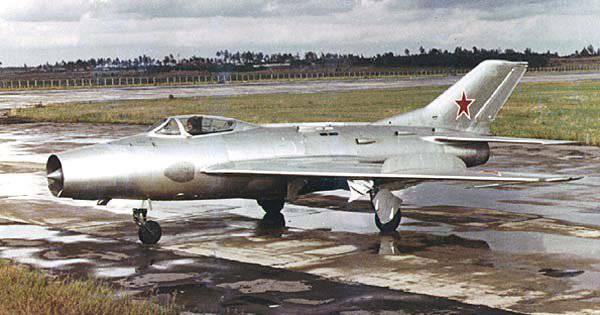
Acceleration time at a height of 14000 m from a speed corresponding to the number M = 0,90 to a speed of 0,95 from the maximum was 6,0 min (fuel consumption 1165 kg), and the acceleration time at the same height to 0,95 the maximum speed of horizontal flight of the MiG-19С times less and amounted to 1,5 mines instead of 3,0 mines in the MiG-19С. The fuel consumption in this case on the SM aircraft - 12 - 680 kg, and on the MiG-19C - 690 kg.
When accelerated in horizontal flight with outboard fuel tanks with a capacity of 760 liters, the number M = 12000-1,31 was reached at the height of 1,32 m, which practically corresponded to the maximum speed of the MiG-19С without tanks. The behavior of the aircraft CM - 12 while it was normal. However, when the aircraft was accelerated at altitudes below 10000 m when the engines were working at the afterburner, the order of production of fuel from the tanks was disrupted, which could lead to the full development of fuel from the first tank if there was fuel in the third and fourth tanks, which disturbed the alignment of the aircraft with all the ensuing consequences .
The practical CM-12 ceiling at afterburner with the climb mode at subsonic speed (M = 0,98) was 17500 m, which exceeded the practical ceiling of the production MiG-300С aircraft on the same dialing mode by 19 m. At the same time, the set time and fuel consumption of the CM - 12 remained almost the same as on the MiG-19C. However, on the practical ceiling in subsonic flight mode on a SM-12 aircraft, as on the MiG-19C, only horizontal flight was possible. Performing even minor maneuvers led to a loss of speed or altitude.
The practical ceiling of the SM - 12 aircraft at supersonic flight speeds (M = 1,2) was also 17500 m, although the fuel consumption increased by 200 l. But in flight on the ceiling in a supersonic mode, the CM - 12 already had the ability to perform limited maneuvering in horizontal and vertical planes with a roll of no more than 15-25 °.
In addition, the SM-12 aircraft, compared with the serial MiG-19С, had higher dynamic qualities due to the fact that it could go to high flight speeds. So in flight with a climb and acceleration in the process of dialing up to M = 1,5 to an altitude of 15000, an aircraft with a decrease in speed could briefly reach altitude to 20000 m with a supersonic speed (M = 1,05). The rest of the fuel when reaching the height of 20000 m was 680 l.
Naturally, the “voracity” of the RZ-26 engines when working at an afterburner and the increased fuel consumption caused the SM-12 to lose to the MiG-19С aircraft in flight range, since the fuel supply (2130 liters) remained unchanged. As a result, the maximum practical flight range without outboard tanks at the height of 12000 m decreased from 1110 km to 920 km, i.e. on 17%. Two 760-liter outboard tanks, fueled by 600 l, although it allowed to increase it to 1530 km, but it was also 260 km less than a production MiG-19С aircraft.
In addition, after acceleration in horizontal flight at an altitude of 12000-13000 m to a maximum speed equal to 1900-1930 km / h, the fuel supply remained no more than 600-700 liters, which reduced the possibility of using speeds close to the maximum.
When performing an afterburner flight away from the airfield with landing on your own airfield with 7% fuel remaining (150 liters), a CM - 12 aircraft without outboard tanks could reach 14000 km / h (less than the maximum speed at this height of 1840 m) altitude at 60 km / h), but could not continue further flight at this speed. At the same time, the plane departed from the departure aerodrome for a distance of about 200 km.
The take-off and landing characteristics (without outboard tanks and with flaps retracted) did not change for the better. The takeoff and take-off distance (up to the 25 m climb) of the SM-12 aircraft with afterburner start-up on the run-up were respectively 720 and 1185 m, against 515 and 1130 and MiG-19С, and with the maximum on the run-up - 965 and 1645 m for SM - 12 and 650 m and 1525 m for MiG-19С.
Due to the high temperature conditions in the rear fuselage, the technical staff serving the aircraft had to more carefully inspect the rear fuselage in the absence of burnout, warping and monitor the presence of uniform gaps between the engine extension tube and the fuselage screen.
Nevertheless, the engines themselves RZ-26 for the entire test period showed their best side. When they climbed, in horizontal flight, and when planning, they worked steadily throughout the entire working range of changes in altitudes and flight speeds of the SM-12 aircraft, as well as when performing aerobatics, including during short-term negative overloads and oil starvation).
The margin of stability in surge and maximum modes during testing was at least 12,8-13,6%, which corresponded to the best world level. However, in connection with the use of RN-26 engines of 2-5 blades for aluminum alloy compressor stages, the military demanded that the OKB-26 Chief Designer undertake constructive measures to ensure the stability of the surge characteristics of the RZ-26 engines as the resource was developed.
RZ-26 engines also worked steadily in pickup tests from low gas mode to nominal, maximum or afterburner modes and throttling from these modes to low gas mode on the ground and in flight at altitudes up to 17000 m with smooth and abrupt (for 1,5-2,0 sec) movements of control levers.
Afterburner engines reliably turned on to 15500 heights at speeds of 400 km / h on the instrument and more, which expanded the combat capabilities of the SM-12 aircraft at high altitudes compared to the MiG-19C. Thus, the main operational parameters of the engine in all cases were in the norms of technical conditions. The military had no particular complaints about the operation of the engines, which cannot be said about their launch system. So the launch of the RZ-26 engines on the ground turned out to be significantly worse than the RD-9B on the MiG-19C. At temperatures below -10 C, launch was possible only from the APA-2 airfield unit. Autonomous engine start at minus temperatures is practically impossible, and engine start, especially the start of the second engine when the first one is running, from the onboard 12CAM-28 rechargeable battery, as well as from the ST-2M starting trolley, even with positive air temperatures. In this regard, the military demanded that OKB-26 and OKB-155 undertake measures to increase reliability, ensure autonomy and reduce the start-up time for the RZ-26 engines on the ground. Engine start-up occurred reliably at an altitude of 8000 m at an instrument speed of more than 400 km / h, and at an altitude of 9000 m at an instrument speed of more than 500 km / h.
On the SM-12 aircraft, the RZ-26 engines were sustained when firing HP-30 guns without localizers at altitudes up to 18000 m and firing missiles with C-5M without using fuel relief valves at altitudes up to 16700 m. To test engine stability RZ-26 when firing with C-5M shells from ORO-57K blocks was fired under all possible flight conditions. In all flights with serial-salvo firing with C-5M shells and shooting with the НР-30 guns without localizers, РЗ-26 engines with disabled fuel dump valves work stably. The number of revolutions and the temperature of the gases behind the turbine of the engines remained practically unchanged when firing. This testified to the inexpediency of installing fuel dumping valves on RZ-26 engines when using C-12M rocket missiles from 5's ORO-4K units on an SM-57 aircraft. Characteristics of technical dispersion when shooting in the dash and the stability of the shooting guns met the requirements of the Air Force, and did not exceed two thousandths. However, when firing cannons at the numbers M = 1,7, the CM-12 aircraft had significant hesitation in roll and somewhat smaller pitch angle, which could not be parried by the deflection of controls because the aircraft began to sway even more. Naturally, this had a negative effect on the accuracy of shooting.
The missile during the test also worked reliably. The recoil force during serial-salvo 32 firing with C-5M rockets (4 projectile in each volley) was felt much less than when firing from the HP-30 cannons. However, the ASP-5H-B4 sight mounted on the aircraft could not provide the necessary accuracy of firing with C-5М shells, which reduced the effectiveness of the combat use of jet weapons.
The range of the SRD-5A radio range did not ensure the use of the entire range of the range worked by the sight (up to 2000 m). If the range of the radio range on the MiG-19 when attacking from the 0 / 4 angle was 1700-2200 m, then when attacking from the 1 / 4 angle and more than 1400-1600 m. At the same time, the range tracking was stable. False seizures by the radio rangefinder at the time of firing from guns are not marked. The radio range finder also steadily worked on the ground from a height of 1000 m. The range of the Sirena-2 tail protection station when attacked by a Yak-25M with a radar sight RP-6 from the rear hemisphere with a 0 / 4 angle was 18 km, which corresponded to the requirements of the VVS.

According to the leading test pilots and flyers flying around, the SM - 12 fighter on piloting techniques practically did not differ from the MiG-19C during the entire range of operational speeds and flight altitudes, as well as during takeoff and landing.
The stability and controllability of the SM-12 aircraft in the range of operational speeds and flight altitudes is basically similar to the stability and controllability of the MiG-19С aircraft, except for the overload instability that is more pronounced compared to the MiG-19С at near-sonic flight speeds at high angles of attack. Overload instability was more pronounced when there were external hangers or air brakes released. On the SM-12 plane, simple, complex, and aerobatic figures were performed: loops and half-loops, coups and dives, turn-ups, barrels, spiral turns, overclocking, and braking. At the same time, the execution of vertical and horizontal pilotage figures on a SM-12 aircraft is similar to the performance of them on an MiG-19C aircraft. Coordinated slip was possible to perform in the whole range of speeds and M numbers, while the roll at large instrument speeds and M numbers did not exceed 5-7 °.
Flights to check the emergency electric control by the stabilizer were performed at instrument speeds up to 1100 km / h at altitudes of 2000-10000 m and up to numbers M = 1,6 at altitudes of 11000-12000 m. Piloting an airplane required the pilot to more precisely move the control stick especially in the range of numbers M = 1,05-1,08. Inaccuracy of movement of the control stick could lead to the buildup of the aircraft. According to test pilots, considering all the above-mentioned advantages and disadvantages of the SM-12 aircraft as compared to the MiG-19C, it was advisable to recommend it for use by Air Force units instead of the MiG-19С, subject to the elimination of the identified defects.
In this regard, the Civil Engineering Institute of the Air Force asked the Chairman of the USSR State Committee for Aviation on Aircraft to oblige OKB-155 to work out a sample of the SM-12 aircraft for mass production and present it for control tests prior to launching into the series, with the necessary modifications.
But it did not have to do. The MAP leadership unreasonably felt that the reserves of the machine have already been exhausted, and it does not make sense to improve it.
In addition, at this time, the prototype MiG-21 fighter prototype, which possesses higher characteristics than the SM aircraft, was successfully tested. In general, everything suggests that work on the CM-12 and its modifications were carried out as a safety net, in case of failure with the future MiG-21.
Still on this story CM fighter - 12 is not over. In the future, the SM-12 / 3 and SM-12 / 4 aircraft made a considerable contribution to the development of the K-13 guided missiles, which were later in service with fighter aircraft.
As you can see, the only drawback of the SM-12 aircraft was the short range, especially in the afterburner. This drawback was due to the gluttony of the RZ-26 engines used on it. However, it should be noted that, much later in China, a supersonic air intake with a fixed central body was also installed on the MiG-19. The aircraft received the name of J-6HI and with the engines RD-9 developed speed to 1700km / h.
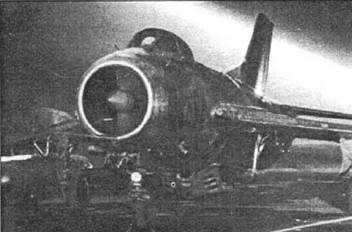
Compared with the Chinese counterpart, the CM-12 had a more progressive, input device, as well as refined aerodynamics. Therefore, it can be argued that with the standard RD-9 engines, the CM-12 could reach speeds of the order of 1800km / h, while maintaining the range in 1300km. Thus, on the basis of the MiG-19, the OKB-155 managed to create a completely successful fighter capable of withstanding any American vehicles of the “hundredth” series, i.e. fulfill the basic requirements for the MiG-21.
Performance characteristics of the CM-12 / 3
Wingspan, m 9.00
Length, m 13.21
Height, m 3.89
Wing area, m2 25.00
- empty aircraft
- maximum takeoff 7654
- fuel 1780
Engine type 2 TRD Р3М-26
Thrust, kgf 2 x 3800
The maximum speed, km / h 1926
Practical range, km
- normal 920
- with PTB 1530
Rate of climb, m / min 2500
Practical ceiling, m 17500
Max. 8 operational overload
Crew 1
Использованная литература:
Aerospace 1999 07
Yefim Gordon. "The first Soviet supersonic"
Wings of Russia. "History and aircraft OKB" MiG "
Wings of the motherland. Nikolay Yakubovich. "Fighter MiG-19"
Aviation and time 1995 05
Nikolay Yakubovich "The first supersonic fighters MiG-17 and MiG-19"
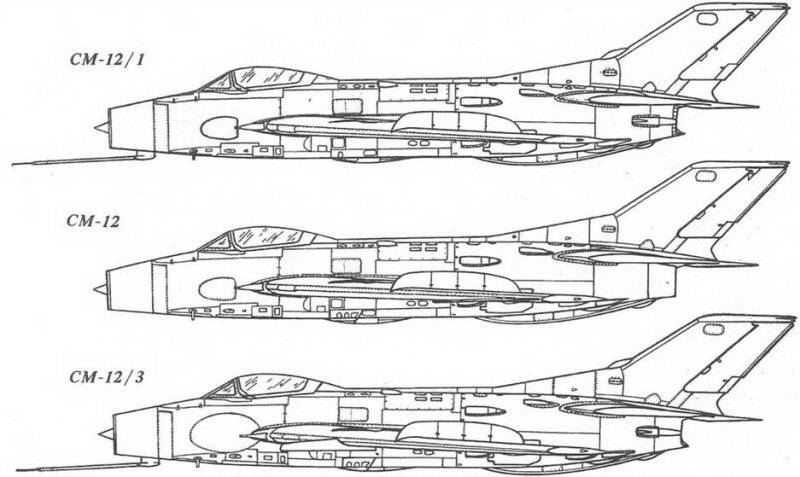

Information